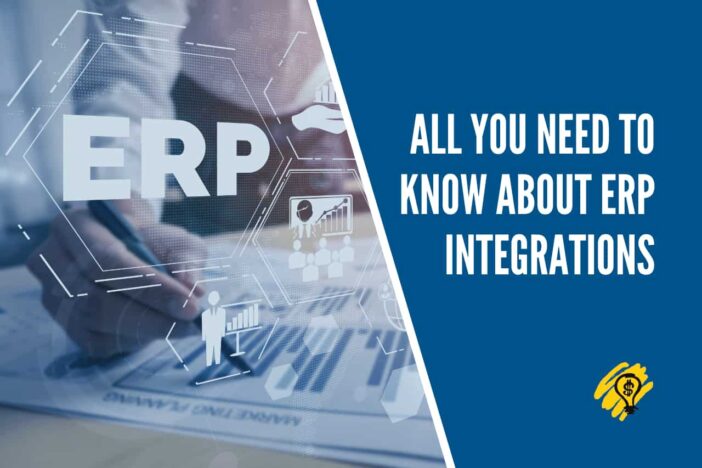ERP stands for Enterprise Resource Planning and is a business solution that can contribute to transforming and scaling your company as well as integrating its systems. ERP assists in performing basic functions such as billing, payment and transaction processing, accounting reports generation, and managing your supply chain and inventory among functions. ERP integration has been successfully applied across multiple sectors including retail, wholesale, and now eCommerce.
Initially, ERP was designed as a solution for automating various back-office functions, but now its usage has expanded to improving different front-end tasks such as eCommerce and marketing. The adoption of ERP systems as part of both front-end and back-end functions means that operations will not be as efficient as they would be if these systems were linked with other applications.
Remember, businesses use various systems to perform different functions in their day-to-day operations, and data sharing between these systems is often a necessity. ERP integration means integrating ERP systems with these platforms. In this post, we will look at what ERP integration is, how it works, and how it can benefit your business.
What is ERP integration?
ERP integration involves the linking of an entity’s ERP system with other applications or systems. The coupling of these systems facilitates the sharing, combining, and analyzing of important data generated from the ERP system as well as the other software applications the company uses.
If ERP integration is set up properly, both systems will run smoothly and sharing of data between these systems is smooth. Users can access various software systems using the ERP system through a unified database. As a result, performance, as well as process functionality, is improved because of the ease of access to data and files. The Virto Commerce ERP integrations are some of the best as they allow connecting with nearly any software system.
How does ERP integration work?
The main purpose of ERP integration is to enable access to the data contained in different systems from one system in real-time, as long as the software system has been integrated with the ERP system. The integration enhances efficiency and workflows, as well as improves team and inter-departmental cooperation.
ERP integration works by connecting software systems with an application programming interface and an enterprise service bus to facilitate communications. Various fields in these software applications will be mapped to those of the ERP system, allowing users to access these fields whenever they log into the ERP. Various systems that can be integrated include customer relationship management, eCommerce platforms, project management applications, and many others.
How ERP integrations can benefit your business
There are numerous benefits a business can get from successfully carrying out ERP integration. They include;
1. Automated processes
Users do not have to log in to different software applications to access important data such as customer information, order details, and so on. This information can be easily accessed by just logging into your ERP system. Without the links, users would have to open multiple windows, and data entry to the ERP system will be manual and cumbersome.
2. Teams become more productive
ERP integration eliminates things such as manual data entry which takes a lot of time. Your team will have more time to carry out important functions such as business development and market penetrations. All data can be accessed from a single platform which makes it easier to analyze and use to make informed decisions.





